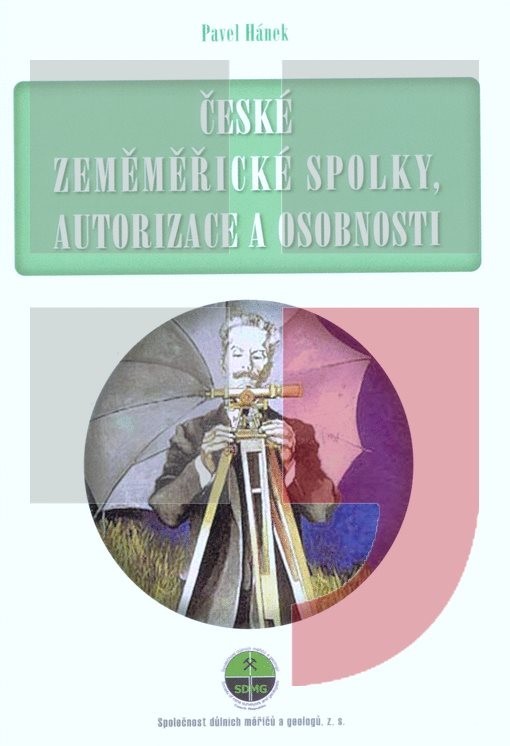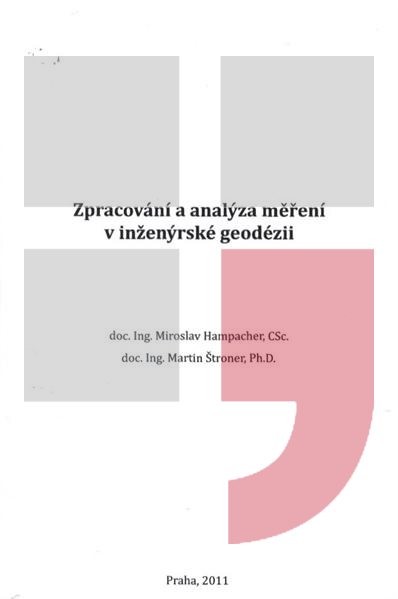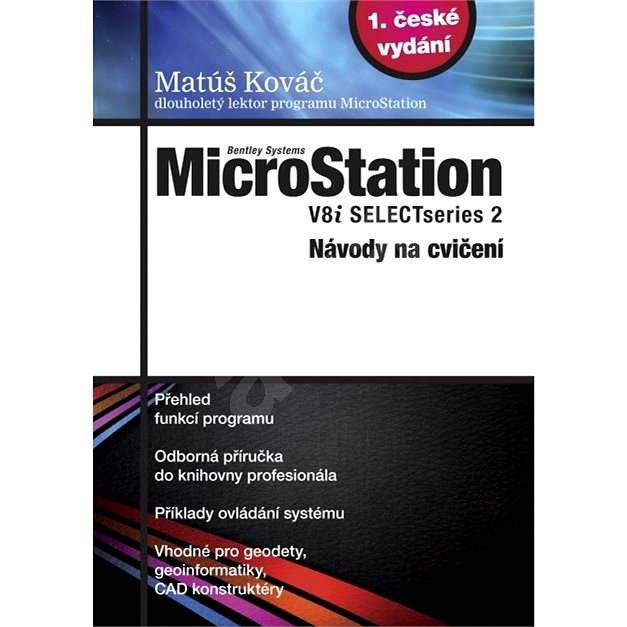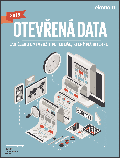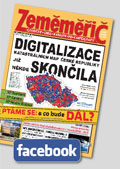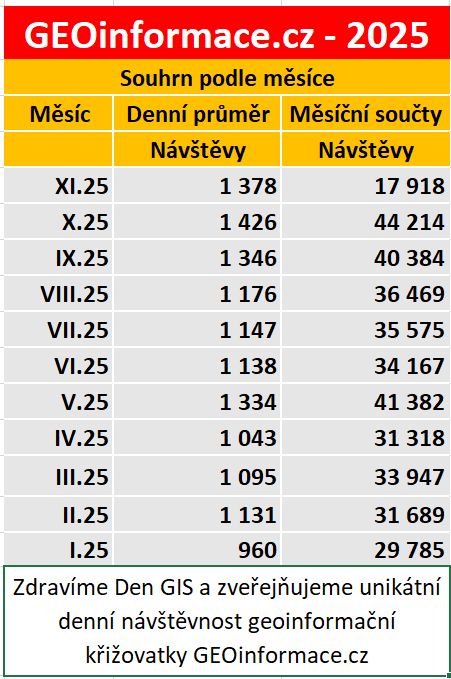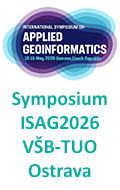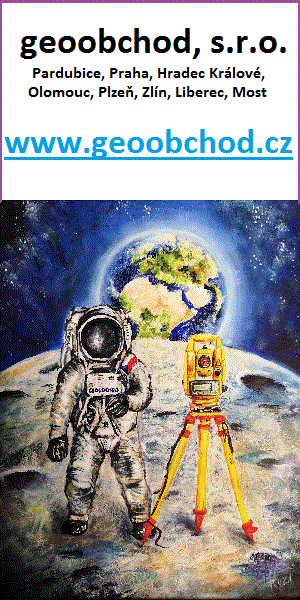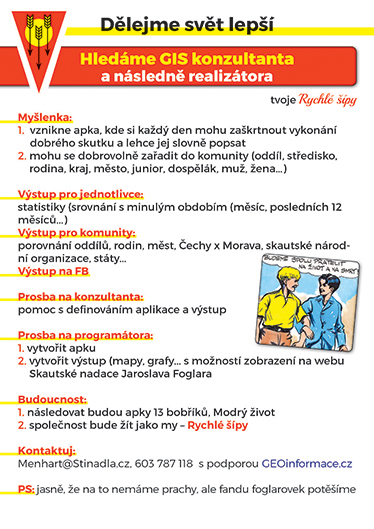zprávy
zdroje zpráv:odborný referent/vrchní referent – zápis do protokolu řízení V a Z
28.3.2023 7:30 ČÚZK - předpisy a opatření Katastrální úřad pro hlavní město Prahuvypisuje výběrové řízení na místo
odborný referent/vrchní referent – zápis do protokolu řízení V a Z
dborný referent/vrchní referent – zápis do protokolu řízení V a Z
28.3.2023 7:30 ČÚZK /Urady/Katastralni-urady/Katastralni-urady/Katastralni-urad-pro-hlavni-mesto-Prahu/Volna-mista/DMS/dborny-referent-vrchni-referent-–-zapis-do-protokodborný referent/vrchní referent – zápis do protokolu řízení V a Z
28.3.2023 7:30 ČÚZK - předpisy a opatření Katastrální úřad pro hlavní město Prahuvypisuje výběrové řízení na místo
dborný referent/vrchní referent – zápis do protokolu řízení V a Z
odborný referent/vrchní referent – zápis do protokolu řízení V a Z
28.3.2023 7:30 ČÚZK /Urady/Katastralni-urady/Katastralni-urady/Katastralni-urad-pro-hlavni-mesto-Prahu/Volna-mista/DMS/dborny-referent-vrchni-referent-–-zapis-do-protokoodborný referent/vrchní referent – zápis do protokolu řízení V a Z
28.3.2023 7:30 ČÚZK - volná místa Katastrální úřad pro hlavní město Prahu vypisuje výběrové řízení na místo odborný referent/vrchní referent – zápis do protokolu řízení V a Zdborný referent/vrchní referent – zápis do protokolu řízení V a Z
28.3.2023 7:30 ČÚZK - volná místa Katastrální úřad pro hlavní město Prahu vypisuje výběrové řízení na místo dborný referent/vrchní referent – zápis do protokolu řízení V a ZVýběrové řízení na pozici vrchní referent / rada v oddělení aktualizace katastru nemovitostí Katastr
28.3.2023 6:15 ČÚZK /Urady/Katastralni-urady/Katastralni-urady/Katastralni-urad-pro-Kralovehradecky-kraj/Uredni-deska/Oznameni-a-jina-uredni-sdeleni/Volna-mista/DMS/Vyberove-rizeni-na-pozici-vrchni-referent-rada-v-oVýběrové řízení na pozici vrchní referent / rada v oddělení aktualizace katastru nemovitostí Katastr
28.3.2023 6:15 ČÚZK - předpisy a opatření Katastrální úřad pro Královéhradecký kraj Katastrální pracoviště Trutnovvypisuje výběrové řízení na místo
Výběrové řízení na pozici vrchní referent / rada v oddělení aktualizace katastru nemovitostí Katastrálního pracoviště Trutnov
Výběrové řízení na pozici vrchní referent / rada v oddělení aktualizace katastru nemovitostí Katastr
28.3.2023 6:15 ČÚZK - volná místa Katastrální úřad pro Královéhradecký kraj Katastrální pracoviště Trutnov vypisuje výběrové řízení na místo Výběrové řízení na pozici vrchní referent / rada v oddělení aktualizace katastru nemovitostí KatastrAkce se vrací – Matterport s 20% slevou!
27.3.2023 17:01 3gon S kamerou PRO2 proměníte své 3D skeny v jedinečnou virtuální prohlídku, kterou Vaši zákazníci absolvují, aniž by museli opustit jejichZveřejnění obsahu informací poskytnutých na žádost dle zákona č. 106/1999 Sb. za rok 2023
27.3.2023 13:30 ČÚZK /Urady/Katastralni-urady/Katastralni-urady/Katastralni-urad-pro-Moravskoslezsky-kraj/Casto-hledane-informace/Poskytovani-informaci-106-1999-Sb/Zverejneni-obsahu-informaci-poskytnutych-na-za-(1)/Zverejneni-obsahu-informaci-poskytnutych-na-za-(5)Zveřejnění obsahu informací poskytnutých na žádost dle zákona č. 106/1999 Sb. za rok 2023
27.3.2023 13:30 ČÚZK - předpisy a opatření Katastrální úřad pro Moravskoslezský krajzveřejňuje obsah informace poskytnutých na žádost dle zákona č. 106/1999 Sb. za rok
2023
Pořádali jsme webinář s ÚCL a Ministerstvem dopravy k modulu Specific a Novele zákona o civilním letectví
27.3.2023 11:11 UAVAV březnu jsme pořádali s ÚCL a Ministerstvem dopravy webinář, který je nově k přehrání. V první polovině představil Mgr. Tomáš Pustina z Ministerstva dopravy hlavní změny Novely zákona o civilním letectví, která začala platit 1.1.2023 a Vyhlášky od 1.4.2023 a v druhé polovině Ing. Petr Plaček z ÚCL představil nový modul Specific, který lze […]
The post Pořádali jsme webinář s ÚCL a Ministerstvem dopravy k modulu Specific a Novele zákona o civilním letectví appeared first on UAV Aliance pro bezpilotní letecký průmysl.
buildingSMART International (bSI) and the International Construction Information Society (I.C.I.S.) Sign MoU to Develop New Working Items
27.3.2023 9:00 buildingSMART.orgLondon, U.K. - March 27, 2023 - London, - buildingSMART International (bSI) and the International Construction Information Society (I.C.I.S.) signed a Memorandum of Understanding (MoU) to work collaboratively in starting projects around the…
The post buildingSMART International (bSI) and the International Construction Information Society (I.C.I.S.) Sign MoU to Develop New Working Items appeared first on buildingSMART International.
buildingSMART International and Geospatial World Sign MoU to Advance BIM and GIS Workflows
27.3.2023 8:59 buildingSMART.orgLondon, U.K. - March 27, 2023 - London, - buildingSMART International (bSI) and Geospatial World signed a Memorandum of Understanding (MoU) to advance openBIM and geospatial workflows for their respective industries. This MoU…
The post buildingSMART International and Geospatial World Sign MoU to Advance BIM and GIS Workflows appeared first on buildingSMART International.
Plannerly Joins buildingSMART International to Advance Information Delivery Specifications
27.3.2023 8:58 buildingSMART.orgLondon, (March 27, 2023) – buildingSMART International is pleased to announce Plannerly has joined as a Standard Member of buildingSMART International (bSI). This announcement comes during the buildingSMART International Standards Summit…
The post Plannerly Joins buildingSMART International to Advance Information Delivery Specifications appeared first on buildingSMART International.
TurboCAD Designer 28 CZ + 30 miliónů CAD Symbolů
26.3.2023 12:48 ŠPINAR - softwarePřipravili jsme pro Vás další spojení TurboCAD Designer + CAD Symbols v akční ceně do 10. 4. 2023.
The post TurboCAD Designer 28 CZ + 30 miliónů CAD Symbolů appeared first on ŠPINAR – software.
TurboCAD Designer 28 CZ + přes 30 miliónů CAD Symbolů
26.3.2023 12:48 ŠPINAR - softwarePřipravili jsme pro Vás skvělé spojení TurboCAD Designer + CAD Symbols v akční ceně do 10. 4. 2023.
The post TurboCAD Designer 28 CZ + přes 30 miliónů CAD Symbolů appeared first on ŠPINAR – software.
TurboCAD Deluxe 28 CZ + přes 30 miliónů CAD Symbolů
26.3.2023 12:38 ŠPINAR - softwarePřipravili jsme pro Vás skvělé spojení TurboCAD Platinum + CAD Symbols v akční ceně do 26 3. 2023,
The post TurboCAD Deluxe 28 CZ + přes 30 miliónů CAD Symbolů appeared first on ŠPINAR – software.
TurboCAD Deluxe 28 CZ + přes 30 miliónů CAD Symbolů
26.3.2023 12:38 ŠPINAR - software Připravili jsme pro Vás skvělé spojení TurboCAD Deluxe + CAD Symbols v akční ceně do 31. 3. 2023.TurboCAD Deluxe 28 CZ + přes 30 miliónů CAD Symbolů
26.3.2023 12:38 ŠPINAR - softwarePřipravili jsme pro Vás skvělé spojení TurboCAD Deluxe + CAD Symbols v akční ceně do 31. 3. 2023.
The post TurboCAD Deluxe 28 CZ + přes 30 miliónů CAD Symbolů appeared first on ŠPINAR – software.
Airport Surveys
26.3.2023 10:01 buildingSMART.orgThe Airport Entities Project team is looking for Airport BIM experts to take part in some industry surveys to help identify and map airport specific objects. This is in connection…
The post Airport Surveys appeared first on buildingSMART International.
Přehled plánovaných změn vyhlášky a JVF DTM
25.3.2023 0:36 ČÚZK - předpisy a opatření Do záložky JVF DTM byla přidán dokumentFirst ever ESA Academy Navigation Training Course!
24.3.2023 16:13 ESA Navigation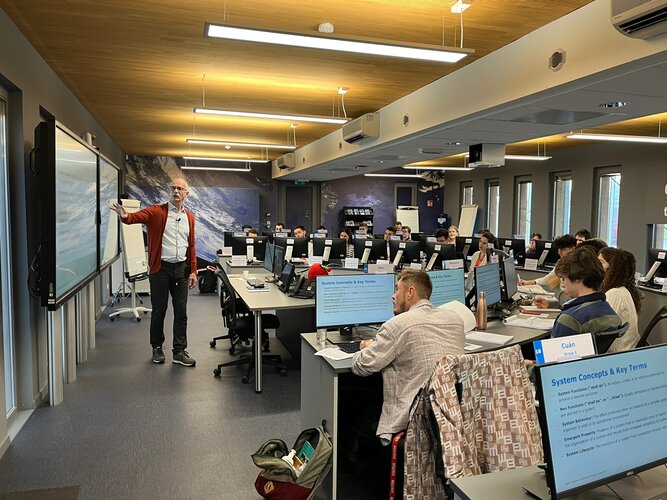
For the first time ever, ESA Academy is opening a call for university students to apply for the pilot edition of the Navigation Training Course, to be held from 26 to 30 June 2023 at ESA Academy’s Training and Learning Facility in ESEC-Galaxia, Belgium. This Training Course has been developed by ESA Education and ESA’s Directorate of Navigation. Would you like to know more about the future of satellite navigation? Apply for our course today!
Vrchní referent / rada – obnova katastrálního operátu v oddělení dokumentace KN Katastrálního pracov
24.3.2023 11:57 ČÚZK - předpisy a opatření Katastrální úřad pro Zlínský kraj Katastrální pracoviště Vsetínvypisuje výběrové řízení na místo
Vrchní referent / rada – obnova katastrálního operátu v oddělení dokumentace KN Katastrálního pracoviště Vsetín
Vrchní referent / rada – obnova katastrálního operátu v oddělení dokumentace KN Katastrálního pracov
24.3.2023 11:57 ČÚZK - volná místa Katastrální úřad pro Zlínský kraj Katastrální pracoviště Vsetín vypisuje výběrové řízení na místo Vrchní referent / rada – obnova katastrálního operátu v oddělení dokumentace KN Katastrálního pracovVrchní referent / rada – obnova katastrálního operátu v oddělení dokumentace KN Katastrálního pracov
24.3.2023 11:57 ČÚZK /Urady/Katastralni-urady/Katastralni-urady/Katastralni-urad-pro-Zlinsky-kraj/Uredni-deska/Oznameni-a-jina-uredni-sdeleni/Volna-mista/DMS/Vrchni-referent-rada-–-obnova-katastralniho-operatJarní promo akce na produkty společnosti AGACAD
24.3.2023 11:15 Arkance SystemsKupte 2 produkty AGACAD a získejte další 2 produkty zdarma. Akce trvá od 30. března do 30. dubna 2023.
Zpráva Jarní promo akce na produkty společnosti AGACAD pochází z arkance-systems.cz.
Seznam k. ú. s probíhající obnovou operátu a revizemi katastru v působnosti KP Nový Jičín 2023
24.3.2023 10:03 ČÚZK - předpisy a opatření Katastrální úřad pro Moravskoslezský kraj - Katastrální pracoviště Nový Jičín zveřejnil novou aktualitu: Katastrální pracoviště Nový Jičín informuje vlastníky a jiné oprávněné a zároveň odbornou veřejnost, že v rámci jeho územní působnosti probíhá obnova operátu novým mapováním a je prováděna revize údajů katastru nemovitostí.Seznam katastrálních území s probíhající obnovou katastrálního operátu novým mapováním v roce 2023:
Jakubčovice nad Odrou,
Luboměř,
Moravské Vlkovice,
Mošnov,
Nová Horka,
Rybí,
Slezské Vlkovice,
Stará Ves u Bílovce.
Seznam katastrálních území s probíhající revizí údajů katastru v roce 2023:
Fulnek,
Hrabětice nad Odrou,
Kateřinice,
Kletné,
Mankovice,
Stachovice,
Trnávka u Nového Jičína.
Podrobnosti k jednotlivým činnostem jsou uvedeny v oznámeních na úředních deskách obecního úřadu a katastrálního pracoviště.
Seznam k. ú. s probíhající obnovou operátu a revizemi katastru v působnosti KP Nový Jičín 2023
24.3.2023 10:03 ČÚZK /Urady/Katastralni-urady/Katastralni-urady/Katastralni-urad-pro-Moravskoslezsky-kraj/Katastralni-pracoviste/KP-Novy-Jicin/O-uradu/Aktuality/Seznam-k-u-s-probihajici-obnovou-operatu-a-revizemEarth from Space: Monterrey, Mexico
24.3.2023 10:00 ESA Observing the Earth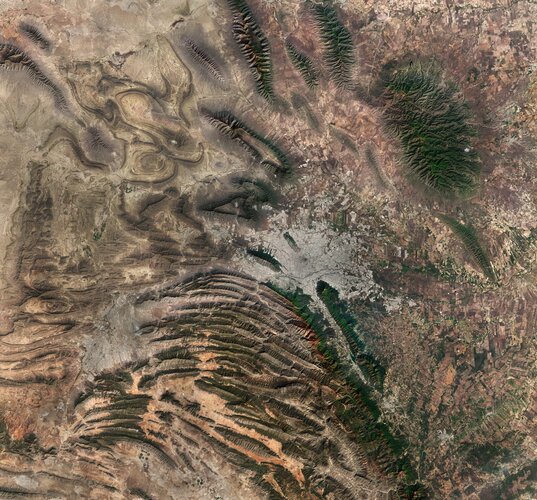 Image:
This Copernicus Sentinel-2 image features the diverse landscape surrounding Monterrey, the capital of the northeast state of Nuevo León, Mexico.
Image:
This Copernicus Sentinel-2 image features the diverse landscape surrounding Monterrey, the capital of the northeast state of Nuevo León, Mexico.
rada/odborný rada - metodik KN na Katastrálním úřadu pro Jihočeský kraj (ID SM: 30000005/30003629)
24.3.2023 9:28 ČÚZK - volná místa Katastrální úřad pro Jihočeský kraj vypisuje výběrové řízení na místo rada/odborný rada - metodik KN na Katastrálním úřadu pro Jihočeský kraj (ID SM: 30000005/30003629)rada/odborný rada - metodik KN na Katastrálním úřadu pro Jihočeský kraj (ID SM: 30000005/30003629)
24.3.2023 9:28 ČÚZK /Urady/Katastralni-urady/Katastralni-urady/Katastralni-urad-pro-Jihocesky-kraj/Uredni-deska/Oznameni-a-jina-uredni-sdeleni/Volna-mista/DMS/rada-odborny-rada-metodik-KN-na-Katastralnim-uradurada/odborný rada - metodik KN na Katastrálním úřadu pro Jihočeský kraj (ID SM: 30000005/30003629)
24.3.2023 9:28 ČÚZK - předpisy a opatření Katastrální úřad pro Jihočeský krajvypisuje výběrové řízení na místo
rada/odborný rada - metodik KN na Katastrálním úřadu pro Jihočeský kraj (ID SM: 30000005/30003629)
Spolupořádali jsme opět Český stánek na Amsterdam Drone Week 2023
24.3.2023 9:00 UAVATento týden na Amsterdam Drone Week s EASA High Level Conference jsme opět měli Český stánek a reprezentovali jsme ČR jako velmi aktivního hráče v oblasti průmyslu i výzkumu s drony před spoustou evropských stakeholderů. Navštívila nás zde i paní velvyslankyně ČR v Nizozemsku. Ukázali jsme na této velké akci spojené s EASA High Level […]
The post Spolupořádali jsme opět Český stánek na Amsterdam Drone Week 2023 appeared first on UAV Aliance pro bezpilotní letecký průmysl.
Škoda Fabia Combi 1,2
24.3.2023 7:28 ČÚZK - předpisy a opatřeníKatastrální úřad pro Vysočinu - Katastrální pracoviště Žďár nad Sázavou nabízí nepotřebný majetek k odkupu. Jedná se o
Škoda Fabia Combi 1,2
Škoda Fabia Combi 1,2
24.3.2023 7:28 ČÚZK /Urady/Katastralni-urady/Katastralni-urady/Katastralni-urad-pro-Vysocinu/Nabidky-majetku/Skoda-Fabia-Combi-1,2Díla nedostupná na trhu v digitálních knihovnách Kramerius [Knihovna geografie, byTopic]
24.3.2023 0:00 Katedra aplikované geoinformatiky a kartografie Přf UK Víte, co jsou tzv. díla nedostupná na trhu (DNNT)? K čemu vám mohou být užitečná? Zajímá vás, jak v nich vyhledávat v rámci digitálních knihoven Kramerius? Mnohé vám napoví prezentace a videa k seminářům k problematice DNNT, které pro vás připravili kolegové z Knihovnického institutu Národní knihovny ČR.Česká komora zeměměřičů – jaká je její působnost, sněm, představenstvo a další orgány
23.3.2023 22:32 ZeměměřičPrezident Petr Pavel ve středu 22. března 2023 podepsal novelu zákona 200/1994 Sb. o zeměměřictví. Podpis prezidenta následuje čtrnáct dní po schválení novely senátem dne 8. března 2023. Novelou se tak mění zákon č. 200/1994 Sb., o zeměměřictví a o změně a doplnění některých zákonů souvisejících s jeho zavedením, ve znění pozdějších předpisů, a zákon č. 47/2020 Sb., kterým se mění zákon č. 200/1994 Sb., o zeměměřictví a o změně a doplnění […]
The post Česká komora zeměměřičů – jaká je její působnost, sněm, představenstvo a další orgány appeared first on Zeměměřič.
New achievement for Galileo and civil aviation
23.3.2023 13:45 European GNSS Agency
Our commitment to serving the civil aviation industry remains steadfast, and we are thrilled to announce the recent adoption of international standards for Galileo and future Satellite Based Augmentation Systems by the Council of the International Civil Aviation Organization (ICAO). This marks a major milestone in the aviation industry, as it enables us to fully leverage the potential of satellite navigation services developed in Europe in combination with GPS.
The Galileo constellation, the European Union's global navigation satellite system, will provide advanced navigation capabilities to the aviation sector, greatly improving the availability and reliability of services. With a more accurate and secure signal for positioning and timing, the risk of signal loss or interference will be significantly reduced. Additionally, the use of multiple frequency bands will enhance signal resilience, making the system more robust and reliable.
Furthermore, the evolution to EGNOS v3 will augment Galileo and enable the use of its dual-frequency bands (E1 and E5 protected for Aviation use) in combination with GPS, further enhancing vertical guidance to enable Precision approach and landing capabilities for all equipped aircraft across Europe. This will provide greater safety and reliability to the aviation industry, not only in Europe but also in other regions beyond the continent.
The adoption of these international standards is the result of the long-standing work of the European Commission DG DEFIS, in partnership with EUSPA, DG-MOVE, EASA and ESA. This collaboration has played a critical role in bringing Galileo and EGNOS to the forefront of the aviation industry.
In conclusion, this adoption of international standards represents a significant step towards achieving the next level of navigation capabilities in the aviation sector, making air travel safer, more efficient, and more reliable. “We are confident that the aviation industry will benefit greatly from this development, and we remain dedicated to serving our civil aviation customers,” concluded Jean-Marc Piéplu, EUSPA EGNOS Exploitation Programme Manager.
Media note: This feature can be republished without charge provided the European Union Agency for the Space Programme (EUSPA) is acknowledged as the source at the top or the bottom of the story. You must request permission before you use any of the photographs on the site. If you republish, we would be grateful if you could link back to the EUSPA website (http://www.euspa.europa.eu).
New achievement for Galileo and civil aviation
23.3.2023 13:45 European GNSS Agency
Our commitment to serving the civil aviation industry remains steadfast, and we are thrilled to announce the recent adoption of international standards for Galileo and future Satellite Based Augmentation Systems by the Council of the International Civil Aviation Organization (ICAO). This marks a major milestone in the aviation industry, as it enables us to fully leverage the potential of satellite navigation services developed in Europe in combination with GPS.
The Galileo constellation, the European Union's global navigation satellite system, will provide advanced navigation capabilities to the aviation sector, greatly improving the availability and reliability of services. With a more accurate and secure signal for positioning and timing, the risk of signal loss or interference will be significantly reduced. Additionally, the use of multiple frequency bands will enhance signal resilience, making the system more robust and reliable.
Furthermore, the evolution to EGNOS v3 will augment Galileo and enable the use of its dual-frequency bands (E1 and E5 protected for Aviation use) in combination with GPS, further enhancing vertical guidance to enable Precision approach and landing capabilities for all equipped aircraft across Europe. This will provide greater safety and reliability to the aviation industry, not only in Europe but also in other regions beyond the continent.
The adoption of these international standards is the result of the long-standing work of the European Commission DG DEFIS, in partnership with EUSPA, DG-MOVE, EASA, ESA and in coordination with the EU Member States and their ANSPs. This collaboration has played a critical role in bringing Galileo and EGNOS to the forefront of the aviation industry.
In conclusion, this adoption of international standards represents a significant step towards achieving the next level of navigation capabilities in the aviation sector, making air travel safer, more efficient, and more reliable. “We are confident that the aviation industry will benefit greatly from this development, and we remain dedicated to serving our civil aviation customers,” concluded Jean-Marc Piéplu, EUSPA EGNOS Exploitation Programme Manager.
Media note: This feature can be republished without charge provided the European Union Agency for the Space Programme (EUSPA) is acknowledged as the source at the top or the bottom of the story. You must request permission before you use any of the photographs on the site. If you republish, we would be grateful if you could link back to the EUSPA website (http://www.euspa.europa.eu).
Jarní akce Arkance Systems – CAD/CAM, strojírenství, výroba, stavebnictví a architektura, infrastruktura
23.3.2023 13:39 Arkance SystemsNa jaře 2023 pořádáme řadu akcí nebo se jich účastníme. Přihlaste se nebo se k nám připojte!
Zpráva Jarní akce Arkance Systems – CAD/CAM, strojírenství, výroba, stavebnictví a architektura, infrastruktura pochází z arkance-systems.cz.
Jarní akce Arkance Systems – CAD/CAM, strojírenství, výroba, stavebnictví, infrastruktura
23.3.2023 13:39 Arkance SystemsNa jaře 2023 pořádáme řadu akcí nebo se jich účastníme. Přihlaste se nebo se k nám připojte!
Zpráva Jarní akce Arkance Systems – CAD/CAM, strojírenství, výroba, stavebnictví, infrastruktura pochází z arkance-systems.cz.
Using EU Space to predict and prepare for the future of weather, climate and water
23.3.2023 10:12 European GNSS Agency
As we recognise World Meteorological Day today, the World Meteorological Organisation asks that we take a moment to consider the future of weather, climate and water across generations.
According to data from the Copernicus Climate Change Service (C3S), the future is expected to be even hotter and characterized by more extreme weather events. This prediction is supported by the latest UN report, published earlier this week, which confirmed that the global surface temperature has risen by 1.1°C above pre-industrial levels (1850-1900).
C3S, like other Copernicus services, utilizes a vast amount of satellite and in situ data, which it analyzes to generate valuable insights into climate change. For instance, it predicts the frequency and severity of heatwaves that are expected to occur in the coming decades. Such data is essential for both adaptation and mitigation measures, as decision-makers need to be informed to take appropriate climate action.
EU Space and Copernicus, in particular, play a crucial role in supporting society, climate researchers, and policymakers by providing authoritative information about the historical, current, and future climate in Europe and the world. The availability of operationally-produced high-quality data is essential for making informed decisions on climate action.
Local authorities and NGOs can use this information to be more proactive to disasters. Predefined early interventions before a disaster takes place, can save human lives and reduce costs compared to performing only post-event interventions. During a recent EUSPA-hosted workshop on Anticipatory Humanitarian Action various stakeholders shared how they are already using Copernicus data and services to anticipate the impact of weather-related disasters, including severe droughts, heatwaves and floods.
As highlighted by Josée Poirer, Senior Data Scientist Consultant in the Centre for Humanitarian Data of the United Nations Office for the Coordination of Humanitarian Affairs (OCHA): “In addition to anticipating the impact of disasters, Earth Observation-derived data, like the ones coming from Copernicus, can assist in the prioritisation of actions for a more targeted and efficient response”.
Space-based solutions to weather-related risks
In addition to hosting informative workshops and webinars, EUSPA also supports companies and projects developing space-based solutions to weather-related risks. It does this primarily through Horizon Europe, the EU’s research and innovation funding programme.
One of those projects is MAGDA, which is leveraging GNSS (including Galileo) and drones to provide the agricultural sector with precise atmosphere monitoring.
“Climate change is expected to produce an increase in severe weather events like torrential rain, heat and cold waves, as well as weather conditions that favour agricultural pests and diseases,” says MAGDA project coordinator Eugenio Realini. “This project aims to improve site-specific weather forecasts as well as irrigation advisories, both of which will proactively contribute to protecting crops from severe weather.”.
As Realini explains, the project will exploit the potential of GNSS-, drone- and Copernicus-derived data sets to improve the prediction of severe weather events and weather-driven agriculture pests and diseases. These same weather forecasts can be used to drive a hydrological model for irrigation performance and water accounting.
Resiliency to a changing climate
The World Meteorological Organisation was first founded 150 years ago, when pollution from industrial and human activities was just starting. Since then, the average global temperature has increased by more than 1° Celsius.
While this increase is causing our weather to become more extreme, the good news is that technology like the EU Space Programme, along with scientific advances such as those being funded by EUSPA, have significantly improved the accuracy of weather forecasts and life-saving early warnings.
“With climate change, the future of our weather, climate, and water cycle is set to change significantly. However, through the valuable data and services offered by the EU Space Programme, we have gained a deeper understanding of the potential changes we might face, enabling us to take proactive measures to prepare for the future. As we continue to monitor and assess the impacts of climate change on our planet, the information provided by the EU Space Programme will play a crucial role in developing effective strategies to mitigate the effects of this global phenomenon," concludes da Costa
Media note: This feature can be republished without charge provided the European Union Agency for the Space Programme (EUSPA) is acknowledged as the source at the top or the bottom of the story. You must request permission before you use any of the photographs on the site. If you republish, we would be grateful if you could link back to the EUSPA website (http://www.euspa.europa.eu).
APGEO - Prezident republiky podepsal vznik České komory zeměměřičů
23.3.2023 1:00 Asociace podnikatelů v geomatice Prezident republiky podepsal novelu zákona 200/1994 Sb. o zeměměřictví.Z knižních novinek (III) - Světový meteorologický den [Knihovna geografie, byTopic]
23.3.2023 0:00 Katedra aplikované geoinformatiky a kartografie Přf UK Světový meteorologický den se každoročně slaví od roku 1950, kdy byla 23. března podepsána dohoda o vzniku World Meteorological Organization (WMO). Letošním mottem je "Budoucnost počasí, klimatu a vody napříč generacemi". A co si lze k tomu přečíst z našich fondů?rada/odborný rada – vedoucí oddělení podpory informačních a komunikačních technologií
22.3.2023 16:55 ČÚZK /Urady/Katastralni-urady/Katastralni-urady/Katastralni-urad-pro-hlavni-mesto-Prahu/Uredni-deska/Oznameni-a-jina-uredni-sdeleni/Volna-mista/DMS/rada-odborny-rada-–-vedouci-oddeleni-podpory-inforrada/odborný rada – vedoucí oddělení podpory informačních a komunikačních technologií
22.3.2023 16:55 ČÚZK - předpisy a opatření Katastrální úřad pro hlavní město Prahuvypisuje výběrové řízení na místo
rada/odborný rada – vedoucí oddělení podpory informačních a komunikačních technologií
rada/odborný rada – vedoucí oddělení podpory informačních a komunikačních technologií
22.3.2023 16:55 ČÚZK - volná místa Katastrální úřad pro hlavní město Prahu vypisuje výběrové řízení na místo rada/odborný rada – vedoucí oddělení podpory informačních a komunikačních technologiíRada/odborný rada - inspektor Zeměměřického a katastrálního inspektorátu v Liberci
22.3.2023 16:05 ČÚZK - volná místa Zeměměřický a katastrální inspektorát v Liberci vypisuje výběrové řízení na místo Rada/odborný rada - inspektor Zeměměřického a katastrálního inspektorátu v LiberciRada/odborný rada - inspektor Zeměměřického a katastrálního inspektorátu v Liberci
22.3.2023 16:05 ČÚZK /Urady/Zememericke-a-katastralni-inspektoraty/Zememericke-a-katastralni-inspektoraty/Zememericky-a-katastralni-inspektorat-v-Liberci/Uredni-deska/Oznameni-a-jina-uredni-sdeleni/Volna-mista/DMS/Oznameni-o-vyhlaseni-VRRada/odborný rada - inspektor Zeměměřického a katastrálního inspektorátu v Liberci
22.3.2023 16:05 ČÚZK - předpisy a opatření Zeměměřický a katastrální inspektorát v Libercivypisuje výběrové řízení na místo
Rada/odborný rada - inspektor Zeměměřického a katastrálního inspektorátu v Liberci
Rada / odborný rada – organizační pracovník kanceláře ředitele Katastrálního úřadu pro Zlínský kraj
22.3.2023 11:54 ČÚZK /Urady/Katastralni-urady/Katastralni-urady/Katastralni-urad-pro-Zlinsky-kraj/Uredni-deska/Oznameni-a-jina-uredni-sdeleni/Volna-mista/DMS/Rada-odborny-rada-–-organizacni-pracovnik-kancelarRada / odborný rada – organizační pracovník kanceláře ředitele Katastrálního úřadu pro Zlínský kraj
22.3.2023 11:54 ČÚZK - volná místa Katastrální úřad pro Zlínský kraj kancelář ředitele vypisuje výběrové řízení na místo Rada / odborný rada – organizační pracovník kanceláře ředitele Katastrálního úřadu pro Zlínský krajRada / odborný rada – organizační pracovník kanceláře ředitele Katastrálního úřadu pro Zlínský kraj
22.3.2023 11:54 ČÚZK - předpisy a opatření Katastrální úřad pro Zlínský kraj kancelář ředitelevypisuje výběrové řízení na místo
Rada / odborný rada – organizační pracovník kanceláře ředitele Katastrálního úřadu pro Zlínský kraj
BIMcert Handbook: Basic Knowledge openBIM
22.3.2023 11:46 czBIMPrologue to the second editon 2023Two years have passed since the frst editon of the BIMcert Handbook. A lot has happened in that tme. We...
Článek BIMcert Handbook: Basic Knowledge openBIM se nejdříve objevil na czBIM.
BIMcert Handbook: Basic Knowledge openBIM
22.3.2023 11:46 czBIMPrologue to the second editon 2023Two years have passed since the frst editon of the BIMcert Handbook. A lot has happened in that tme. We...
Článek BIMcert Handbook: Basic Knowledge openBIM se nejdříve objevil na czBIM.
Návrh nového openBIM® standardu IDS předložen ke schválení buildingSMART
22.3.2023 11:33 czBIMbuildingSMART dokončuje přípravu nového openBIM® standardu pro „Information Delivery Specification“ (IDS) neboli pro specifikaci předávání informací. IDS je standardem pro definování požadavků na informace způsobem,...
Článek Návrh nového openBIM® standardu IDS předložen ke schválení buildingSMART se nejdříve objevil na czBIM.
Návrh nového openBIM® standardu IDS předložen ke schválení buildingSMART
22.3.2023 11:33 czBIMbuildingSMART dokončuje přípravu nového openBIM® standardu pro „Information Delivery Specification“ (IDS) neboli pro specifikaci předávání informací. IDS je standardem pro definování požadavků na informace způsobem,...
Článek Návrh nového openBIM® standardu IDS předložen ke schválení buildingSMART se nejdříve objevil na czBIM.
AUTO Škoda Fabia TDI 1,9 Combi
22.3.2023 9:30 ČÚZK /Urady/Zememericky-urad/Nabidka-majetku/AUTO-Skoda-Fabia-TDI-1,9-CombiAUTO Škoda Fabia TDI 1,9 Combi
22.3.2023 9:30 ČÚZK - předpisy a opatřeníZeměměřický úřad nabízí nepotřebný majetek k odkupu. Jedná se o
AUTO Škoda Fabia TDI 1,9 Combi
AUTO Škoda Fabia TDI 1,9 Combi
22.3.2023 9:30 Zeměměřický úřadZeměměřický úřad nabízí nepotřebný majetek k odkupu. Jedná se o
AUTO Škoda Fabia TDI 1,9 Combi
Odstávka mapových aplikací Geoportálu a výdeje dat
22.3.2023 9:09 Jihočeský krajV sobotu 25.3.2023 od 18:00 budou z technických důvodů nedostupné mapové aplikace Geoportálu a nebude možné žádat o výdej dat. Obnovení plného provozu předpokládáme v sobotu 25.3.2023 po 23:00.
rnrnOmlouváme se za komplikace
Přerušení dodávky elektřiny
22.3.2023 8:48 ČÚZK /Urady/Katastralni-urady/Katastralni-urady/Katastralni-urad-pro-Pardubicky-kraj/Katastralni-pracoviste/KP-Svitavy/O-uradu/Aktuality/Preruseni-dodavky-elektrinyPřerušení dodávky elektřiny
22.3.2023 8:48 ČÚZK - předpisy a opatření Katastrální úřad pro Pardubický kraj - Katastrální pracoviště Svitavy zveřejnil novou aktualitu:Aretinova mapa Čech v bojích třicetileté války [Knihovna geografie, byTopic]
22.3.2023 0:00 Katedra aplikované geoinformatiky a kartografie Přf UK O třetí nejstarší tištěné mapě Čech z 1. poloviny 17. století a jejím autorovi, kartografu Pavlu Aretinovi z Ehrenfeldu hovořila dr. Eva Novotná v pořadu Planetárium regionální stanice Českého rozhlasu - Sever.Z knižních novinek (II) - Světový den vody [Knihovna geografie, byTopic]
22.3.2023 0:00 Katedra aplikované geoinformatiky a kartografie Přf UK 22. března se slaví Světový den vody. V knihovně geografie si jej můžeme připomenout několika zajímavými novinkami ve fondu. Přijďte nás navštívit a začíst se do zajímavých publikací!Z knižních novinek (I) [Knihovna geografie, byTopic]
21.3.2023 16:35 Katedra aplikované geoinformatiky a kartografie Přf UK Letošní zima byla u nás podle meteorologických měření jednou z nejteplejších. Pojďte se tedy vypravit za chladem, sněhem a ledem alespoň symbolicky prostřednictvím nových přírůstků ve fondu Knihovny geografie!Výběrové řízení na pozici Vrchní ministerský rada v oddělení koncepčním a metodickém, v odboru územního plánování
21.3.2023 15:05 Blogující geomatici - FAV ZČUVYHLÁŠENÍ VÝBĚROVÉHO ŘÍZENÍ na služební místo vrchního ministerského rady v oddělení koncepčním a metodickém, v odboru územního plánování Co nabízíme: Možnost podílet se na tvorbě koncepce územního plánování v ČR. Rozmanitou činnost v oblasti digitalizace územního plánování. Možnost podílet se na zavádění inovativních řešení v územních plánování. Možnost profesního růstu zejména v oblasti digitalizace veřejné správy. Odměňování ve 14. platové třídě (tarifní plat od 34.840 Kč do 51.530 Kč podle délky Vaší započitatelné praxe) a osobní příplatek na základě Vašeho individuálního výkonu. Benefity naleznete na: https://www.mmr.cz/cs/kariera/benefity. Co očekáváme: Dosažené vzdělání v magisterském studijním programu. Na služebním místě budete vykonávat službu v oboru 41. Bydlení, územní plánování a stavební řád. Bližší informace jsou uvedeny v oznámení o vyhlášení výběrového řízení. Předpokládaný nástup v květnu 2023 nebo dle dohody.
| Datum vystavení | 21. 03. 2023 |
| Datum platnosti | 10. 04. 2023 |
| Doba trvání | Na dobu neurčitou |
| Smluvní vztah | Služební poměr |
OZNÁMENÍ O VYHLÁŠENÍ VÝBĚROVÉHO ŘÍZENÍ
na služební místo vrchního ministerského rady v oddělení koncepčním a metodickém, v odboru územního plánování
Č. j.: MMR-21210/2023-94
Datum: 21. března 2023
1. Údaje o služebním místě
Státní tajemnice Ministerstva pro místní rozvoj jako služební orgán příslušný podle § 10 odst. 1 písm. f) zákona č. 234/2014 Sb., o státní službě, ve znění pozdějších předpisů (dále jen „zákon“), vyhlašuje výběrové řízení na služební místo č. MMR_1241 vrchního ministerského rady v oddělení koncepčním a metodickém, v odboru územního plánování, v Ministerstvu pro místní rozvoj, se služebním působištěm v Praze.
Na služebním místě je státní služba (dále jen „služba“) vykonávána v oboru služby
41 – Bydlení, územní plánování a stavební řád.
Na služebním místě jsou vykonávány zejména následující činnosti:
- tvoří koncepci územního plánování ČR;
- tvoří koncepci digitalizace územně plánovacích dokumentací a podkladů, včetně standardizace těchto dokumentů;
- vypracovává metodické materiály související s digitalizací územně plánovacích dokumentací a podkladů, včetně tvorby vzorových dat a výstupů, spolupracuje na pořízení územně plánovacích podkladů (územní studie a územně analytické podklady) nezbytné k výkonu činnosti odboru;
- spolupracuje při pořizování dokumentů územního rozvoje řešících vzájemné vazby v území;
- spolupracuje v rámci metodické činnosti na úseku územně analytických podkladů, usměrňuje a sjednocuje výkon státní správy a praxi orgánů územního plánování;
- podílí se na vedení informačního systému územního plánování;
- podílí se na výkonu nadřízeného orgánu územního plánování, plní další úkoly dle pokynu příslušného představeného, které vyplývají z činnosti odboru územního plánování.
2. Údaje o složkách platu
Zveřejnění uvedených údajů o složkách platu nepředstavuje veřejný příslib.
Služební místo je zařazeno podle přílohy č. 1 k zákonu o státní službě do 14. platové třídy.
2.1 Platový tarif
Státnímu zaměstnanci přísluší platový tarif od 34.840 Kč do 51.530 Kč.
Státní zaměstnanec se zařadí do platového stupně podle započitatelné praxe a míry jejího zápočtu podle § 3 nařízení vlády č. 304/2014 Sb., o platových poměrech státních zaměstnanců, ve znění pozdějších předpisů.
2.2 Osobní příplatek
Rozpětí od 2.577 Kč do 7.730 Kč odpovídá průměrné výši osobního příplatku při dosahování dobrých výsledků ve služebním hodnocení ve služebních úřadech v České republice.
Osobní příplatek je nenároková složka platu, kterou lze ocenit státního zaměstnance za jeho znalosti, dovednosti, a především za jeho výkonnost. V závislosti na výsledku jeho služebního hodnocení tedy státnímu zaměstnanci přísluší osobní příplatek v rozmezí od 0 Kč do částky odpovídající 50 % platového tarifu nejvyššího platového stupně v platové třídě, do které je zařazeno služební místo, na kterém státní zaměstnanec vykonává službu, a u tzv. vynikajících, všeobecně uznávaných odborníků do částky odpovídající 100 %.
2.3 Odměny
Státnímu zaměstnanci, který splnil mimořádné nebo zvlášť významné služební úkoly nebo který dobrovolně převzal splnění naléhavých služebních úkolů za nepřítomného státního zaměstnance, lze poskytnout odměnu a státnímu zaměstnanci, který se bezprostředně nebo významně podílel na splnění předem stanoveného mimořádně náročného služebního úkolu, jež je z hlediska působnosti služebního úřadu zvlášť významné, lze poskytnout cílovou odměnu. Odměny jsou nenárokové, zpravidla se vyplácejí 2x ročně dle objemu disponibilních finančních prostředků.
3. Údaje o podmínkách výkonu služby
Služba na služebním místě bude vykonávána ve služebním poměru na dobu neurčitou.
Předpokládaným dnem nástupu do služby na služebním místě je 1. květen 2023 nebo dle dohody.
Délka stanovené týdenní služební doby je 40 hodin.
Další údaje o podmínkách výkonu služby naleznete na internetové stránce Ministerstva vnitra https://www.mvcr.cz/sluzba/soubor/ssp-c-3-2022-priloha-c-3b-podminky-vykonu-sluzby-text.aspx
Služební úřad poskytuje následující benefity: https://www.mmr.cz/cs/kariera/benefity
4. Podání žádosti
Posuzovány budou žádosti[1] o přijetí do služebního poměru a zařazení na služební místo nebo žádosti o zařazení na služební místo (dále jen „žádost“) podané ve lhůtě do 10. dubna 2023 (žádosti doručené po uplynutí této lhůty budou vyřazeny), tj. v této lhůtě:
- podané v elektronické podobě prostřednictvím datové schránky služebního úřadu 26iaava;
- podané v elektronické podobě podepsané uznávaným elektronickým podpisem na adresu elektronické pošty služebního úřadu podatelna@mmr.cz;
- doručené služebnímu orgánu prostřednictvím provozovatele poštovních služeb na adresu služebního úřadu Ministerstvo pro místní rozvoj, Staroměstské náměstí 6, 110 15 Praha 1;
- podané osobně na podatelnu služebního úřadu na výše uvedené adrese.
Obálka, resp. datová zpráva, obsahující žádost včetně požadovaných listin (příloh) musí být označena slovy: „Neotvírat“ a slovy „Výběrové řízení na služební místo vrchního ministerského rady v oddělení koncepčním a metodickém, č.j.: 21210/2023-94 MG“.
V žádosti je žadatel povinen uvést ID datové schránky nebo elektronickou adresu, na kterou mu budou doručovány písemnosti ve výběrovém řízení.
5. Podmínky účasti ve výběrovém řízení
Výběrového řízení na výše uvedené služební místo, se v souladu se zákonem může zúčastnit žadatel, který:
1) Splňuje základní předpoklady stanovené zákonem tj.:
a) je státním občanem České republiky[2], občanem jiného členského státu Evropské unie nebo občanem státu, který je smluvním státem Dohody o Evropském hospodářském prostoru [§ 25 odst. 1 písm. a) zákona];
b) dosáhl věku 18 let [§ 25 odst. 1 písm. b) zákona];
c) je plně svéprávný [§ 25 odst. 1 písm. c) zákona][3];
d) je bezúhonný [§ 25 odst. 1 písm. d) zákona][4];
e) dosáhl vzdělání stanoveného zákonem pro toto služební místo [§ 25 odst. 1 písm. e) zákona], tj. vysokoškolského vzdělání v magisterském studijním programu[5];
f) má potřebnou zdravotní způsobilost [§ 25 odst. 1 písm. f) zákona][6];
6. Další povinné přílohy
K žádosti dále žadatel přiloží:
a) strukturovaný profesní životopis[7]
b) motivační dopis
c) doklad o dosaženém vzdělání
7. Údaje o pohovoru
Se žadateli, jejichž žádost nebyla vyřazena, provede výběrová komise pohovor.
V případě dotazů k tomuto výběrovému řízení se můžete obrátit na Mgr. Magdalénu Dejmkovou na e-mailu Magdalena.Dejmkova@mmr.cz.
Ing. Zdeňka Pikešová, MPA
státní tajemnice Ministerstva pro místní rozvoj
Krátka správa č. 16/2023
21.3.2023 13:55 Komora geodetů a kartografů SRThe post Krátka správa č. 16/2023 appeared first on Komora geodetov a kartografov.
Krátka správa č. 16/2023
21.3.2023 13:55 Komora geodetů a kartografů SRThe post Krátka správa č. 16/2023 appeared first on Komora geodetov a kartografov.
Dubnový den s CAD technikem – bezplatná online konzultace pro vaši firmu
21.3.2023 12:00 Arkance Systems21. dubna 2023 - přihlaste se na nový termín akce společnosti Arkance Systems. Těšíme se na vás.
Zpráva Dubnový den s CAD technikem – bezplatná online konzultace pro vaši firmu pochází z arkance-systems.cz.
Dubnový den s CAD/PDM expertem – bezplatná online konzultace pro vaši firmu
21.3.2023 12:00 Arkance Systems21. dubna 2023 - přihlaste se na nový termín akce společnosti Arkance Systems. Těšíme se na vás.
Zpráva Dubnový den s CAD/PDM expertem – bezplatná online konzultace pro vaši firmu pochází z arkance-systems.cz.
Odborný referent/vrchní referent – obnova katastrálního operátu
21.3.2023 10:53 ČÚZK - předpisy a opatření Katastrální úřad pro Moravskoslezský kraj Katastrální pracoviště Třinecvypisuje výběrové řízení na místo
Odborný referent/vrchní referent – obnova katastrálního operátu
Odborný referent/vrchní referent – obnova katastrálního operátu
21.3.2023 10:53 ČÚZK - volná místa Katastrální úřad pro Moravskoslezský kraj Katastrální pracoviště Třinec vypisuje výběrové řízení na místo Odborný referent/vrchní referent – obnova katastrálního operátuVrchní referent/rada – obnova katastrálního operátu
21.3.2023 10:51 ČÚZK - předpisy a opatření Katastrální úřad pro Moravskoslezský kraj Katastrální pracoviště Ostravavypisuje výběrové řízení na místo
Vrchní referent/rada – obnova katastrálního operátu
Vrchní referent/rada – obnova katastrálního operátu
21.3.2023 10:51 ČÚZK - volná místa Katastrální úřad pro Moravskoslezský kraj Katastrální pracoviště Ostrava vypisuje výběrové řízení na místo Vrchní referent/rada – obnova katastrálního operátuRada/odborný rada – kontrola listin určených k záznamu
21.3.2023 10:47 ČÚZK - předpisy a opatření Katastrální úřad pro Moravskoslezský kraj Katastrální pracoviště Ostravavypisuje výběrové řízení na místo
Rada/odborný rada – kontrola listin určených k záznamu
Rada/odborný rada – kontrola listin určených k záznamu
21.3.2023 10:47 ČÚZK - volná místa Katastrální úřad pro Moravskoslezský kraj Katastrální pracoviště Ostrava vypisuje výběrové řízení na místo Rada/odborný rada – kontrola listin určených k záznamuRada/odborný rada – kontrola listin určených k záznamu
21.3.2023 10:47 ČÚZK /Urady/Katastralni-urady/Katastralni-urady/Katastralni-urad-pro-Moravskoslezsky-kraj/Uredni-deska/Oznameni-a-jina-uredni-sdeleni/Volna-mista/DMS/Rada-odborny-rada-–-kontrola-listin-urcenych-k-zazVrchní referent/rada – obnova katastrálního operátu
21.3.2023 10:41 ČÚZK - předpisy a opatření Katastrální úřad pro Moravskoslezský kraj Katastrální pracoviště Karvinávypisuje výběrové řízení na místo
Vrchní referent/rada – obnova katastrálního operátu
Vrchní referent/rada – obnova katastrálního operátu
21.3.2023 10:41 ČÚZK - volná místa Katastrální úřad pro Moravskoslezský kraj Katastrální pracoviště Karviná vypisuje výběrové řízení na místo Vrchní referent/rada – obnova katastrálního operátuVrchní referent/rada – obnova katastrálního operátu na
21.3.2023 10:38 ČÚZK - předpisy a opatření Katastrální úřad pro Moravskoslezský kraj Katastrální pracoviště Frýdek-Místekvypisuje výběrové řízení na místo
Vrchní referent/rada – obnova katastrálního operátu na
Vrchní referent/rada – obnova katastrálního operátu na
21.3.2023 10:38 ČÚZK - volná místa Katastrální úřad pro Moravskoslezský kraj Katastrální pracoviště Frýdek-Místek vypisuje výběrové řízení na místo Vrchní referent/rada – obnova katastrálního operátu naVrchní referent/rada – obnova katastrálního operátu na
21.3.2023 10:38 ČÚZK /Urady/Katastralni-urady/Katastralni-urady/Katastralni-urad-pro-Moravskoslezsky-kraj/Uredni-deska/Oznameni-a-jina-uredni-sdeleni/Volna-mista/DMS/Vrchni-referent-rada-–-obnova-katastralniho-op-(3)Vrchní referent/rada – obnova katastrálního operátu
21.3.2023 10:35 ČÚZK - předpisy a opatření Katastrální úřad pro Moravskoslezský kraj Katastrální pracoviště Frýdek-Místekvypisuje výběrové řízení na místo
Vrchní referent/rada – obnova katastrálního operátu
Vrchní referent/rada – obnova katastrálního operátu
21.3.2023 10:35 ČÚZK - volná místa Katastrální úřad pro Moravskoslezský kraj Katastrální pracoviště Frýdek-Místek vypisuje výběrové řízení na místo Vrchní referent/rada – obnova katastrálního operátuHappy International Forests Day!
21.3.2023 10:10 European GNSS Agency
Forests offer countless benefits – from purifying water to cleaning the air and capturing carbon to fight climate change. They also provide food, life-saving medicines and raw materials for building homes. And who hasn’t enjoyed going for a hike in the woods?
To celebrate the many benefits of healthy forests, the United Nations has designated today, 21 March, as the International Day of Forests. But more than celebrating, today is also a chance to raise awareness about the importance of protecting our forests.
“Conserving and sustainably using forests is one of the best ways of protecting our planet and our own well-being,” says EUSPA Executive Director Rodrigo da Costa. “It’s up to us to safeguard these precious natural resources – and EU Space and our Agency can help.”
From promoting reforestation to preventing deforestation, degradation and fires, the EU Space Programme is an essential tool for sustainable forest management. Here’s six ways that Copernicus, EGNOS and Galileo are all working to ensure that everyone can benefit from healthy forests.
1. Keeping an eye on carbon sinks
Trees are important carbon sinks, meaning they absorb more carbon from the atmosphere than they release. According to the Forest Information System for Europe (FISE), as of 2020, Europe’s forests were storing 92.1 gigatonnes of carbon. Unfortunately, when forests disappear or become degraded, all this stored carbon gets emitted back into the atmosphere.
This highlights the critical need to monitor the carbon stocks of forested regions – monitoring that can be done via Earth Observation. For example, using the Copernicus Land Monitoring Service, climate scientists can map and monitor forest biomass and estimate its potential to serve as a carbon sink.
2. Planting 3 billion trees
A key component of the EU Forest Strategy, which aims to improve the quantity and quality of Europe’s forests while also strengthening their protection, restoration and resilience, is to plant 3 billion new trees by 2030. According to the 2022 EUSPA EO and GNSS Market Report, Earth Observation will play a big part in achieving this goal.
With the climate and weather data provided by Copernicus, authorities can better understand how different tree species will adapt to droughts, heatwaves and other climate-induced extreme weather events. EO can also provide decision makers with the data on soil composition they need to ensure these new trees are planted in the right conditions.
3. Stopping deforestation
The UN estimates that every year the world loses nearly 4.7 million hectares of forested area. Much of this loss is due to deforestation, the process of converting forested land into other uses.
When it comes to detecting, mapping and monitoring this deforestation, nothing beats Earth Observation. For example, EO-based tools for forest monitoring are using Copernicus data, along with the optical and radar instruments onboard Sentinel satellites, to provide global information with a high acquisition frequency to forestry stakeholders completely free of charge.
4. Preventing illegal logging
Copernicus can even help prevent illegal logging – a major cause of deforestation. By flagging potential development and road construction happening within forests, EO data helps authorities look for illegal activity and predict where such activity is most likely to occur.
Authorities also use GNSS to track timbre movements, which can help increase the transparency and traceability of the timber supply chain, reducing the likelihood that illegal exportation goes unnoticed.
5. Sustainable forests management
Much of Europe’s forests are under the management of the forest industry and are used to source raw material to produce paper and wood products. If these forests aren’t sustainably managed, we could run out of raw material – which is why the forestry industry is keen on using EU Space.
Forest managers and owners use remote sensing technologies to gather data over the large, often remote swaths of land that managed forests cover. They then use this data to track relevant inventory and, based on this, optimise harvesting and planting plans.
The forestry industry also relies on GNSS for such precision operations as the guidance of machinery and the variable rate application of fertilisers and irrigation – all of which allow the timber industry to implement best practices in sustainable forest management.
Thanks to its more robust signals, Galileo performs better under dense tree canopies, enabling machine guidance in forest environments. Moreover, Galileo is used to guide drones, which are increasingly being utilised in forest management operations.
6. Fighting forests fires
With climate change causing extreme draughts, heatwaves and winds, forest fires are becoming an all-too frequent occurrence. Luckily, fire departments and decision makers can rely on Earth Observation to help mitigate the risk of fires before they happen and to battle them when they do. That’s because EO has the advantage of being able to provide wide geographic coverage and the ability to ‘see’ through clouds and smoke and rapidly capture images.
Firefighting teams are also replacing their ground-based systems and use of rotorcraft with drones equipped with a range of sensors for capturing data. Such systems are particularly beneficial in rural and remote areas, where EO-equipped drones guided by the precise positioning offered by GNSS can provide wildfire fighters with another layer of information – and protection.
7. Cassini Hackathon and EUSPA´s contribution
EUSPA is leading the Cassini hackathons and also there, forestry is a big topic! Earth observation to protect forests from bark beetle infestation was the idea of YOLANDA. Blaz & Matic were old friends, they met Primoz and Lucija at the Cassini Hackathon #4. They were all already familiar with the problem of bark beetle infestation, but only during the hackathon, they crafted a realistic plan for a software product that allows forest insurers/owners to have actionable insights from satellite imagery. The ultimate outcome is the preservation of our natural resources and an increase in CO2 sequestration.
Endless potential
As we celebrate International Forests Day, it’s important to remember that, while our forests are in trouble, there is still plenty we can do to help.
“From carbon monitoring to sustainable logging, Copernicus, Galileo and EGNOS are indispensable tools for protecting – even restoring – our forests,” concludes da Costa. “When these tools are paired with emerging technologies like drones, robots and artificial intelligence, the potential for preserving healthy forests for future generations is endless. The protection of our forests is critical not only for the environment but also for the success of the EU Green Deal and our collective efforts to combat climate change.”
To learn more about this potential, be sure to check out the dedicated chapter in the latest edition of our EO and GNSS Market Report and get in touch with EUSPA at market@euspa.europa.eu.
Media note: This feature can be republished without charge provided the European Union Agency for the Space Programme (EUSPA) is acknowledged as the source at the top or the bottom of the story. You must request permission before you use any of the photographs on the site. If you republish, we would be grateful if you could link back to the EUSPA website (http://www.euspa.europa.eu).
Happy International Forests Day!
21.3.2023 10:10 European GNSS Agency
Forests offer countless benefits – from purifying water to cleaning the air and capturing carbon to fight climate change. They also provide food, life-saving medicines and raw materials for building homes. And who hasn’t enjoyed going for a hike in the woods?
To celebrate the many benefits of healthy forests, the United Nations has designated today, 21 March, as the International Day of Forests. But more than celebrating, today is also a chance to raise awareness about the importance of protecting our forests.
“Conserving and sustainably using forests is one of the best ways of protecting our planet and our own well-being,” says EUSPA Executive Director Rodrigo da Costa. “It’s up to us to safeguard these precious natural resources – and EU Space and our Agency can help.”
From promoting reforestation to preventing deforestation, degradation and fires, the EU Space Programme is an essential tool for sustainable forest management. Here’s six ways that Copernicus, EGNOS and Galileo are all working to ensure that everyone can benefit from healthy forests.
1. Keeping an eye on carbon sinks
Trees are important carbon sinks, meaning they absorb more carbon from the atmosphere than they release. According to the Forest Information System for Europe (FISE), as of 2020, Europe’s forests were storing 92.1 gigatonnes of carbon. Unfortunately, when forests disappear or become degraded, all this stored carbon gets emitted back into the atmosphere.
This highlights the critical need to monitor the carbon stocks of forested regions – monitoring that can be done via Earth Observation. For example, using the Copernicus Land Monitoring Service, climate scientists can map and monitor forest biomass and estimate its potential to serve as a carbon sink.
2. Planting 3 billion trees
A key component of the EU Forest Strategy, which aims to improve the quantity and quality of Europe’s forests while also strengthening their protection, restoration and resilience, is to plant 3 billion new trees by 2030. According to the 2022 EUSPA EO and GNSS Market Report, Earth Observation will play a big part in achieving this goal.
With the climate and weather data provided by Copernicus, authorities can better understand how different tree species will adapt to droughts, heatwaves and other climate-induced extreme weather events. EO can also provide decision makers with the data on soil composition they need to ensure these new trees are planted in the right conditions.
3. Stopping deforestation
The UN estimates that every year the world loses nearly 4.7 million hectares of forested area. Much of this loss is due to deforestation, the process of converting forested land into other uses.
When it comes to detecting, mapping and monitoring this deforestation, nothing beats Earth Observation. For example, EO-based tools for forest monitoring are using Copernicus data, along with the optical and radar instruments onboard Sentinel satellites, to provide global information with a high acquisition frequency to forestry stakeholders completely free of charge.
4. Preventing illegal logging
Copernicus can even help prevent illegal logging – a major cause of deforestation. By flagging potential development and road construction happening within forests, EO data helps authorities look for illegal activity and predict where such activity is most likely to occur.
Authorities also use GNSS to track timbre movements, which can help increase the transparency and traceability of the timber supply chain, reducing the likelihood that illegal exportation goes unnoticed.
5. Sustainable forests management
Much of Europe’s forests are under the management of the forest industry and are used to source raw material to produce paper and wood products. If these forests aren’t sustainably managed, we could run out of raw material – which is why the forestry industry is keen on using EU Space.
Forest managers and owners use remote sensing technologies to gather data over the large, often remote swaths of land that managed forests cover. They then use this data to track relevant inventory and, based on this, optimise harvesting and planting plans.
The forestry industry also relies on GNSS for such precision operations as the guidance of machinery and the variable rate application of fertilisers and irrigation – all of which allow the timber industry to implement best practices in sustainable forest management.
Thanks to its more robust signals, Galileo performs better under dense tree canopies, enabling machine guidance in forest environments. Moreover, Galileo is used to guide drones, which are increasingly being utilised in forest management operations.
6. Fighting forests fires
With climate change causing extreme draughts, heatwaves and winds, forest fires are becoming an all-too frequent occurrence. Luckily, fire departments and decision makers can rely on Earth Observation to help mitigate the risk of fires before they happen and to battle them when they do. That’s because EO has the advantage of being able to provide wide geographic coverage and the ability to ‘see’ through clouds and smoke and rapidly capture images.
Firefighting teams are also replacing their ground-based systems and use of rotorcraft with drones equipped with a range of sensors for capturing data. Such systems are particularly beneficial in rural and remote areas, where EO-equipped drones guided by the precise positioning offered by GNSS can provide wildfire fighters with another layer of information – and protection.
7. Cassini Hackathon and EUSPA´s contribution
EUSPA is leading the Cassini hackathons and also there, forestry is a big topic! Earth observation to protect forests from bark beetle infestation was the idea of YOLANDA. Blaz & Matic were old friends, they met Primoz and Lucija at the Cassini Hackathon #4. They were all already familiar with the problem of bark beetle infestation, but only during the hackathon, they crafted a realistic plan for a software product that allows forest insurers/owners to have actionable insights from satellite imagery. The ultimate outcome is the preservation of our natural resources and an increase in CO2 sequestration.

4th CASSINI Hackathon winners YOLANDA (Slovenia)
Endless potential
As we celebrate International Forests Day, it’s important to remember that, while our forests are in trouble, there is still plenty we can do to help.
“From carbon monitoring to sustainable logging, Copernicus, Galileo and EGNOS are indispensable tools for protecting – even restoring – our forests,” concludes da Costa. “When these tools are paired with emerging technologies like drones, robots and artificial intelligence, the potential for preserving healthy forests for future generations is endless. The protection of our forests is critical not only for the environment but also for the success of the EU Green Deal and our collective efforts to combat climate change.”
To learn more about this potential, be sure to check out the dedicated chapter in the latest edition of our EO and GNSS Market Report and get in touch with EUSPA at market@euspa.europa.eu.
Media note: This feature can be republished without charge provided the European Union Agency for the Space Programme (EUSPA) is acknowledged as the source at the top or the bottom of the story. You must request permission before you use any of the photographs on the site. If you republish, we would be grateful if you could link back to the EUSPA website (http://www.euspa.europa.eu).
Odborný/vrchní referent – obnova katastrálního operátu
21.3.2023 10:04 ČÚZK - volná místa Katastrální úřad pro Moravskoslezský kraj technický odbor vypisuje výběrové řízení na místo Odborný/vrchní referent – obnova katastrálního operátuOdborný/vrchní referent – obnova katastrálního operátu
21.3.2023 10:04 ČÚZK - předpisy a opatření Katastrální úřad pro Moravskoslezský kraj technický odborvypisuje výběrové řízení na místo
Odborný/vrchní referent – obnova katastrálního operátu
Odborný/vrchní referent – obnova katastrálního operátu
21.3.2023 10:04 ČÚZK /Urady/Katastralni-urady/Katastralni-urady/Katastralni-urad-pro-Moravskoslezsky-kraj/Uredni-deska/Oznameni-a-jina-uredni-sdeleni/Volna-mista/DMS/Odborny-vrchni-referent-–-obnova-katastralniho-opeVrchní referent/rada – kontrola aktualizace
21.3.2023 9:59 ČÚZK - předpisy a opatření Katastrální úřad pro Moravskoslezský kraj Katastrální pracoviště Opavavypisuje výběrové řízení na místo
Vrchní referent/rada – kontrola aktualizace
Vrchní referent/rada – kontrola aktualizace
21.3.2023 9:59 ČÚZK - volná místa Katastrální úřad pro Moravskoslezský kraj Katastrální pracoviště Opava vypisuje výběrové řízení na místo Vrchní referent/rada – kontrola aktualizaceEarth observation supports latest UN climate report
20.3.2023 16:30 ESA Observing the Earth
The final instalment of the sixth assessment report by the United Nations' Intergovernmental Panel on Climate Change (IPCC) has been released today. The report warns that the planet has already warmed 1.1°C above pre-industrial levels, resulting in more frequent and intense extreme weather events that are causing increasingly dangerous impacts on nature and people in every region of the world.
The report includes a greater contribution of Earth observation data than its previous iterations in providing the physical evidence of Earth’s changing climate system – from sea-level rise, growing greenhouse-gas emissions and melting sea ice.
referent/vrchní referent – informační a kontrolní pracovník
20.3.2023 15:52 ČÚZK /Urady/Katastralni-urady/Katastralni-urady/Katastralni-urad-pro-hlavni-mesto-Prahu/Uredni-deska/Oznameni-a-jina-uredni-sdeleni/Volna-mista/DMS/referent-vrchni-referent-–-informacni-a-kontrolni-referent/vrchní referent – informační a kontrolní pracovník
20.3.2023 15:52 ČÚZK /Urady/Katastralni-urady/Katastralni-urady/Katastralni-urad-pro-hlavni-mesto-Prahu/Uredni-deska/Oznameni-a-jina-uredni-sdeleni/Volna-mista/DMS/referent-vrchni-referent-–-informacni-a-kontrolnireferent/vrchní referent – informační a kontrolní pracovník
20.3.2023 15:52 ČÚZK - předpisy a opatření Katastrální úřad pro hlavní město Prahuvypisuje výběrové řízení na místo
referent/vrchní referent – informační a kontrolní pracovník
referent/vrchní referent – informační a kontrolní pracovník
20.3.2023 15:52 ČÚZK - volná místa Katastrální úřad pro hlavní město Prahu vypisuje výběrové řízení na místo referent/vrchní referent – informační a kontrolní pracovníkGIS Slovakia již od zítřka
20.3.2023 15:11 GISportal.cz
Online konference GIS Slovakia začíná již zítra (úterý 21.3.) a bude se konat do čtvrtka 23.3. Konference je přístupná všem zdarma skrze MS Teams. Více informací naleznete také jako event na Facebooku. Program konference je zaměřený především na praktické využití GIS nejen ve státní sféře na Slovensku, ale i v ČR. Utorok 21.3.2023 ********************************************************************************************* 09:09 […]
The post GIS Slovakia již od zítřka appeared first on GISportal.cz.
GIS Slovakia již od zítřka
20.3.2023 15:11 GISportal.cz
Online konference GIS Slovakia začíná již zítra (úterý 21.3.) a bude se konat do čtvrtka 23.3. Konference je přístupná všem zdarma skrze MS Teams. Více informací naleznete také jako event na Facebooku. Program konference je zaměřený především na praktické využití GIS nejen ve státní sféře na Slovensku, ale i v ČR. Utorok 21.3.2023 ********************************************************************************************* 09:09 […]
The post GIS Slovakia již od zítřka appeared first on GISportal.cz.
Pozvánka na „Deň otvorených výkopov v Radetone“
20.3.2023 14:45 Geotronics.sk Srdečne Vás pozývame na DEŇ OTVORENÝCH VÝKOPOV V RADETONE V spolupráci s Radeton SK s.r.o. a so zástupcom Geotronics Slovakia, s.r.o. môžete stretnúť už tento týždeň 23. a 24. marca 2023 v českom sídle RADETON v Brne. Pozvánku na toto podujatie nájdete TU: Na tomto mieste je vybudovaný veľký polygón rôznych podzemných vedení, na ktorých si [...]Pozvánka na „Deň otvorených výkopov v Radetone“
20.3.2023 14:45 Geotronics.sk Srdečne Vás pozývame na DEŇ OTVORENÝCH VÝKOPOV V RADETONE V spolupráci s Radeton SK s.r.o. sa so zástupcom Geotronics Slovakia, s.r.o. môžete stretnúť už tento týždeň 23. a 24. marca 2023 v českom sídle RADETON v Brne. Pozvánku na toto podujatie nájdete TU: Na tomto mieste je vybudovaný veľký polygón rôznych podzemných vedení, na ktorých si môžete [...]Pozvánka na „Deň otvorených výkopov v Radetone“
20.3.2023 14:45 Geotronics.sk Srdečne Vás pozývame na DEŇ OTVORENÝCH VÝKOPOV V RADETONE V spolupráci s Radeton SK s.r.o. a so zástupcom Geotronics Slovakia, s.r.o. môžete stretnúť už tento týždeň 23. a 24. marca 2023 v českom sídle RADETON v Brne. Pozvánku na toto podujatie nájdete TU: Na tomto mieste je vybudovaný veľký polygón rôznych podzemných vedení, na ktorých si [...]Webinář - Efektivní využití produktu Autodesk Docs
20.3.2023 13:26 Adeon
Společnost Adeon CZ srdečně zve všechny zájemce na exkluzivní webinář, který se bude zaměřovat na produkt Autodesk DOCS z platformy […]
The post Webinář - Efektivní využití produktu Autodesk Docs appeared first on Adeon CZ.
Nedostupné telefonní linky na KP Klatovy
20.3.2023 13:24 ČÚZK /Urady/Katastralni-urady/Katastralni-urady/Katastralni-urad-pro-Plzensky-kraj/Katastralni-pracoviste/KP-Klatovy/O-uradu/Aktuality/Nedostupne-telefonni-linky-na-KP-KlatovyNedostupné telefonní linky na KP Klatovy
20.3.2023 13:24 ČÚZK - předpisy a opatření Katastrální úřad pro Plzeňský kraj - Katastrální pracoviště Klatovy zveřejnil novou aktualitu: V době od 23. 3. 2023 8:00 do 18:00 dojde na pracovišti Klatovy k plánované výluce služeb firmy Ha-vel z důvodu práce v síti operátora. Po tuto dobu nebudou dostupné telefonní linky na KP Klatovy.Nedostupné telefonní linky na KP Klatovy
20.3.2023 13:21 ČÚZK - předpisy a opatření Katastrální úřad pro Plzeňský kraj - Katastrální pracoviště Klatovy zveřejnil novou aktualitu: V době od 23. 3. 2023 8:00 do 18:00 dojde na pracovišti Klatovy k plánované výluce služeb firmy Ha-vel z důvodu práce v síti operátora. Po tuto dobu nebudou dostupné telefonní linky na KP Klatovy.Nedostupné telefonní linky na KP Klatovy
20.3.2023 13:21 ČÚZK /Urady/Katastralni-urady/Katastralni-urady/Katastralni-urad-pro-Plzensky-kraj/O-uradu/Aktuality/Nedostupne-telefonni-linky-na-KP-KlatovyVŘ správce IKT
20.3.2023 9:49 ČÚZK /Urady/Zememericky-urad/Uredni-deska/Oznameni-a-jina-uredni-sdeleni/Volna-mista/DMS/VR-spravce-IKTVŘ správce IKT
20.3.2023 9:49 ČÚZK - volná místa Zeměměřický úřad vypisuje výběrové řízení na místo VŘ správce IKTVŘ správce IKT
20.3.2023 9:49 ČÚZK - předpisy a opatření Zeměměřický úřadvypisuje výběrové řízení na místo
VŘ správce IKT
VŘ správce IKT
20.3.2023 9:49 Zeměměřický úřad Zeměměřický úřadvypisuje výběrové řízení na místo
VŘ správce IKT
Ceny rektorky pro studenty katedry [Katedra aplikované geoinformatiky a kartografie, byTopic]
20.3.2023 8:25 Katedra aplikované geoinformatiky a kartografie Přf UK Mezi laureáty letošních Cen rektorky Univerzity Karlovy jsou Petra Krsková a Mojmír Polák, kteří obhájili své práce na Katedře aplikované geoinformatiky a kartografie. Gratulujeme!Ceny rektorky pro studenty katedry [Katedra aplikované geoinformatiky a kartografie, byTopic]
20.3.2023 8:25 Katedra aplikované geoinformatiky a kartografie Přf UKAnalytik IKT / Analytička IKT
20.3.2023 8:03 ČÚZK /Urady/Zememericky-urad/Volna-mista/DMS/Analytik-IKT-Analyticka-IKTAnalytik IKT / Analytička IKT
20.3.2023 8:03 ČÚZK - předpisy a opatření Zeměměřický úřadvypisuje výběrové řízení na místo
Analytik IKT / Analytička IKT
Analytik IKT / Analytička IKT
20.3.2023 8:03 ČÚZK - volná místa Zeměměřický úřad vypisuje výběrové řízení na místo Analytik IKT / Analytička IKTAnalytik IKT / Analytička IKT
20.3.2023 8:03 Zeměměřický úřad Zeměměřický úřadvypisuje výběrové řízení na místo
Analytik IKT / Analytička IKT
ISPRS e-bulletin: 2023 – Issue No.1
19.3.2023 21:48 Společnost pro fotogrammetrii a dálkový průzkumISPRS e-bulletin: 2023 – Issue No.1
The post ISPRS e-bulletin: 2023 – Issue No.1 appeared first on SFDP.




